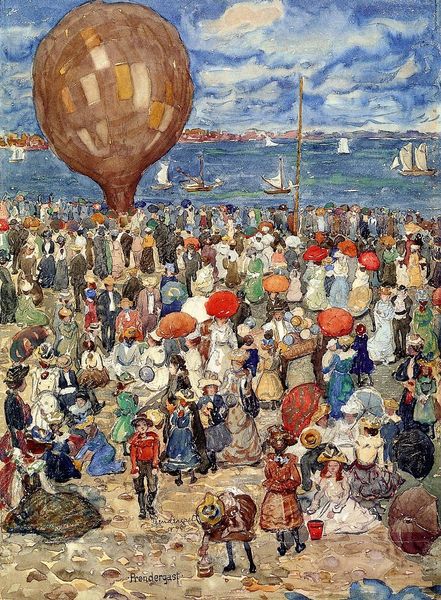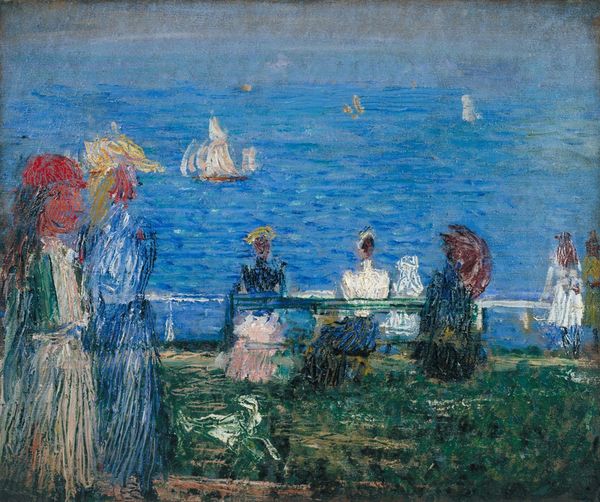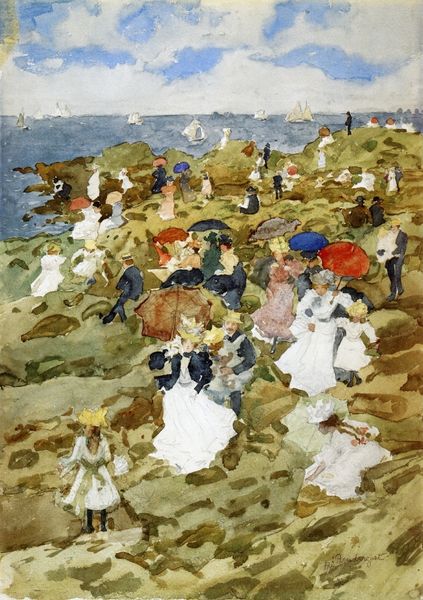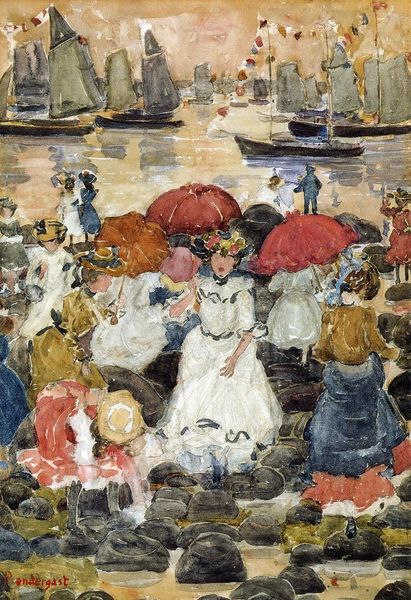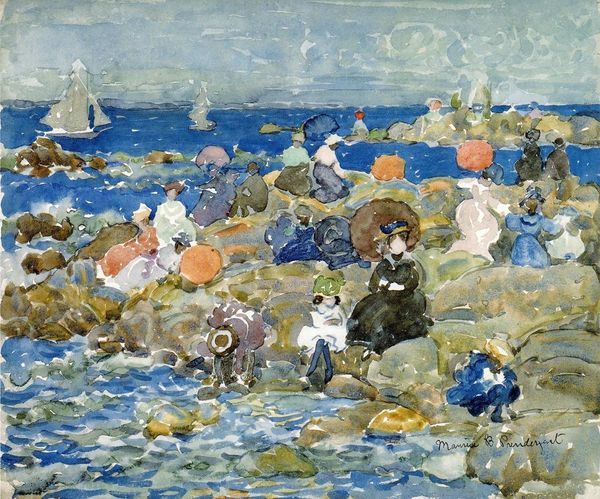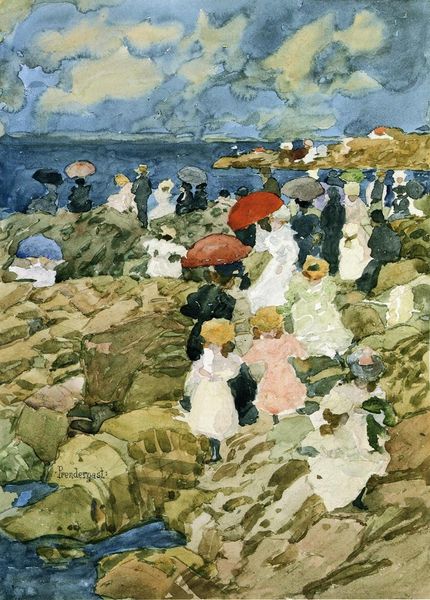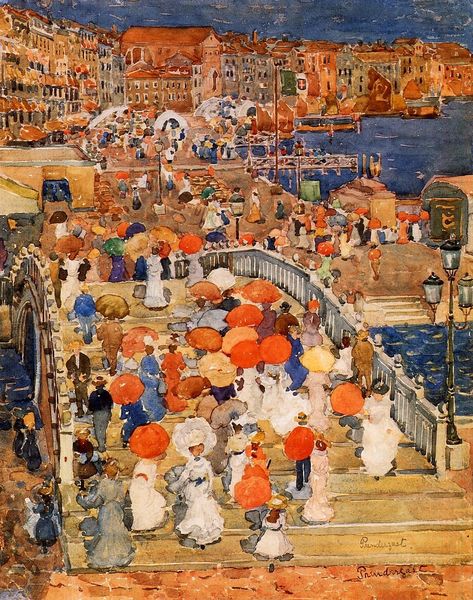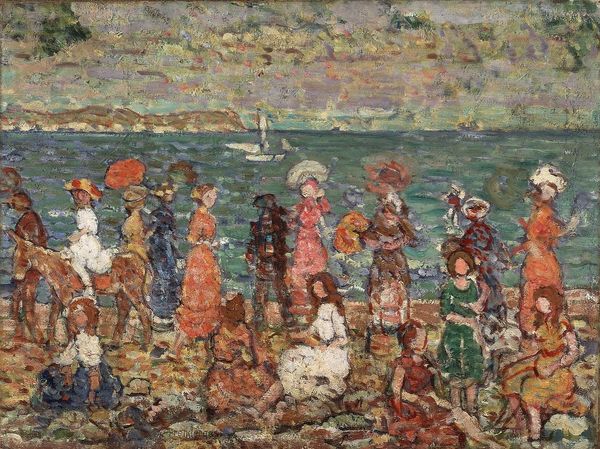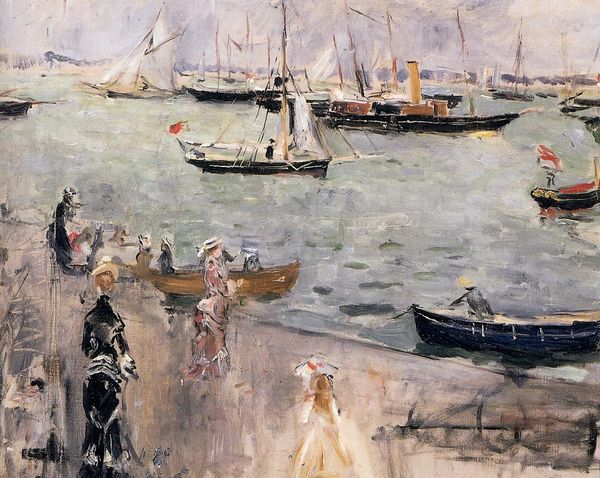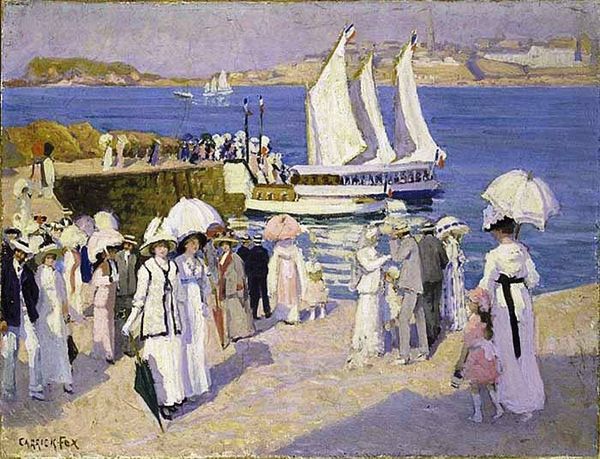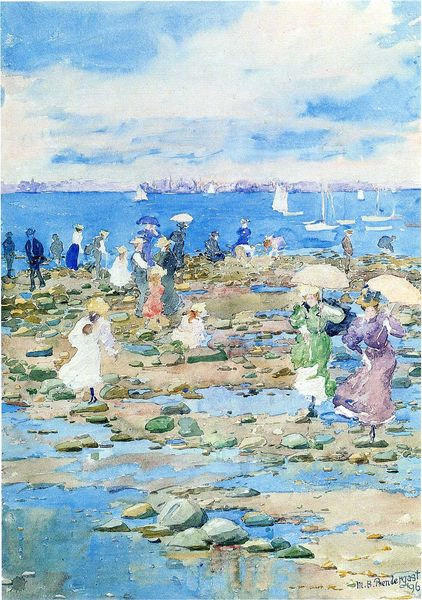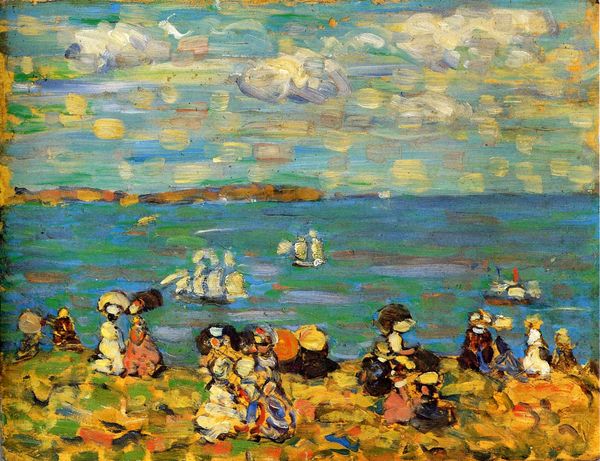
Dimensions: 33.66 x 51.44 cm
Copyright: Public domain
Editor: Here we have Maurice Prendergast's "Nantasket Beach," painted in 1896. It's a vibrant watercolor and gouache piece depicting a bustling beach scene. The sheer number of people is striking, all these figures with parasols like colourful dots. What strikes you most about it? Curator: Well, I'm immediately drawn to how Prendergast captures the burgeoning leisure culture of the late 19th century. Consider that burgeoning middle class with increased access to disposable income and leisure time. Beaches like Nantasket became important public spaces. How does this piece fit into the broader artistic trends of its time, do you think? Editor: It definitely feels Impressionistic, with the focus on capturing a fleeting moment and the vibrant, unblended colours. Curator: Exactly! And consider the politics of looking. Who has access to these leisure spaces? Prendergast presents a relatively homogenous crowd. Whose stories are missing? Thinking about art and its viewers, who would the paintings be for? Editor: That's a great point, it feels celebratory, but also perhaps obscures certain realities. There is no sign of the working class who serviced this holiday making for instance. Curator: Precisely. The painting becomes a document, intentionally or unintentionally, of a specific social moment and the cultural values embedded within it. Are the figures at random, or is there intention within placement? Editor: Now that you mention it, the placement seems deliberate. There appear to be implied social interactions, clusters of people forming distinct groups... Curator: And those clusters reflect the social codes and expectations of the time. It’s fascinating how a seemingly simple beach scene can reveal so much about the societal structures beneath the surface. Editor: I never considered how much social commentary could be packed into what seemed like just a pretty picture! I'll definitely be viewing art through a different lens from now on. Curator: That's the power of art history! Hopefully next time you'll know who this appeals to, and for what reason. Always ask why something exists!
Comments
No comments
Be the first to comment and join the conversation on the ultimate creative platform.
